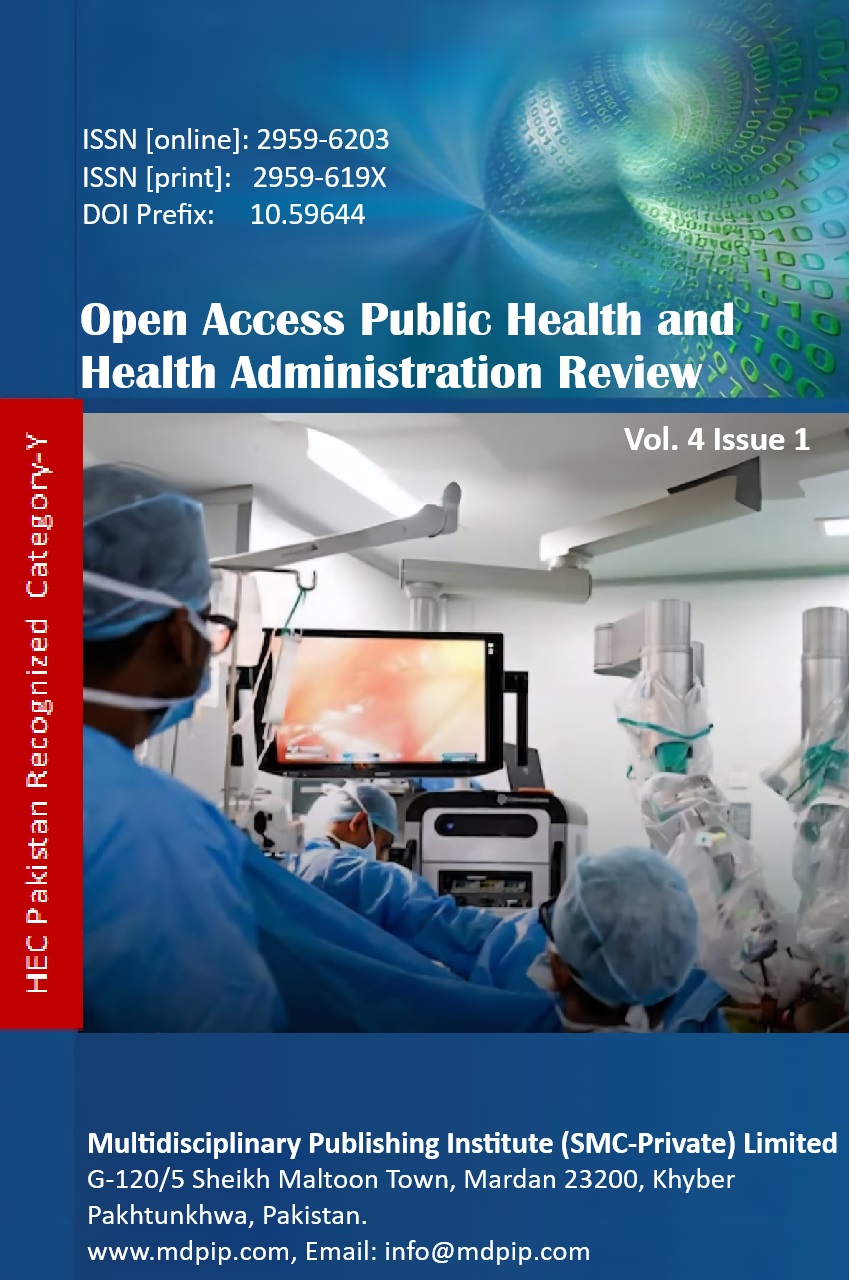Pakistan’s Combating Wild Poliovirus (WPV): Efforts and Lessons Learned
DOI:
https://doi.org/10.59644/oaphhar.4(1).182Abstract
Pakistan stands at a critical juncture in the history of public health. As one of only two remaining countries endemic for wild poliovirus (WPV), alongside Afghanistan, the nation carries a significant burden—and an even greater responsibility—in the global quest for eradication. The fight against polio in Pakistan is a complex tapestry woven with threads of remarkable resilience, innovative strategies, hard-won successes, and persistent, daunting challenges. From a public health perspective, understanding this landscape is paramount, not just for Pakistan but for the health security of the world. Despite decades of effort, WPV transmission stubbornly lingers, primarily in specific high-risk zones of Khyber Pakhtunkhwa (KP) and parts of Balochistan and Sindh. The year 2023 saw only 6 reported WPV1 cases – a significant reduction from peaks exceeding 300 annually, demonstrating progress. However, the continued detection of the virus in environmental samples from major cities like Karachi, Peshawar, Quetta, and Bannu underscores the silent circulation and the ever-present risk of resurgence. Key reservoirs remain in areas characterized by insecurity, population mobility, low routine immunization coverage, and persistent community refusals. Pakistan has come too far and invested too much to falter now. The recent low case numbers are encouraging but fragile. The virus exploits any gap with ruthless efficiency. The strategies are proven; the successes demonstrate what is possible. The end of polio in Pakistan is within sight. Achieving it will be one of public health's greatest triumphs, a testament to human perseverance and collaboration. It is not just an option; it is an ethical and practical imperative for the health of Pakistan's children and the world. The time for the final, decisive push is now.






